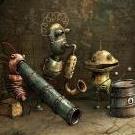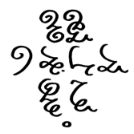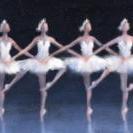Leaderboard
Popular Content
Showing content with the highest reputation since 09/22/2024 in all areas
-
Hello. My chronological journey of music brought me to Romanticism, in which I have been immersed for months. I study its methods, harmonies, etc... And that has led me to study also the neo-Riemannian theory, since many chord progressions are explained through it. I write some things practicing these concepts. This Consolation III (as there were two others already) is very much inspired by Liszt's, in its structure and some resources. I have also based it on a pop song whose harmony is fantastic. You have to absorb from all sources....3 points
-
I Wrote a Sonata for Rach (Sonata Quasi Una Fantasia in cis moll) - CelvinPiano Hello fellow musicians and music lovers, I am an 16 years old composer and I’ve recently finished writing a Sonata in C# minor, dedicated to Rachmaninoff, and I’d love to get some ears on it! If anyone is up for giving it a listen and sharing their thoughts or feedback, I’d really appreciate it. Anything from the composition itself to ideas on performance would be super helpful. And if someone feels inspired to perform it, that would be amazing! I’m open to chatting about that as well, and we could definitely figure something out if it resonates with you. Feel free to reach out if you’re interested, or if you know someone who might be. Can’t wait to hear what you think! Best, Celvin3 points
-
I can only speak for the UK: there's far too much nannying - it's a growth industry. Broadcasts, through vox pop, have shown students not knowing how to boil an egg, others who can't work out how to open corned beef can with the attached key, and very few who could fit a 3-pin electrical plug. To me, AI fits in this category. It's purveyors, no doubt cheer-led by the WEF want to attenuate people's ability to think so that they become just puppets. So - for composing it has no future for me. Incidentally, did anyone see the broadcast clip of the robotic conductor..........? To me, utter rubbish. Only naive geeks would get excited. It misses the whole point of the conductor's job: to prepare the orchestra and in concert be just the figurehead and deal with anything going wrong. Imagine this machine doing an opera like Lulu when something goes wrong! https://www.youtube.com/watch?v=ZGeRlwxpDYs2 points
-
Hi @expert21! I like all the chromaticism and well chosen harmonic motion! Very nice voice-leading. I think you did a good job picking an interesting bass line and harmony for the melody! And kudos for getting @Henry Ng Tsz Kiu to perform this! There is so much harmonic detail to this - I think it's your best piece that you've written thus far. And it's a stylistically appropriate example of what a Siciliana is supposed to be. The middle section in the dominant key works well too. Great job and thanks for sharing!2 points
-
Nice music. I didn't hear anything that seemed out of place when I gave it a listen. True, musical memory is definitely a factor involved in determining how well-received a musical gesture will be. That's why, for example, a modern audience will often accept things like unprepared dissonances without batting an eyelash. Most people today have been exposed to such things all their lives and therefore hear them without being in the least shocked or surprised.2 points
-
Hi Everyone, here is a first draft of a piece I am working. It is intended as background/atmospheric music and I've tried to make it more of a mood piece. Cheers! Aled Edwards Mood Piano Piece.mp32 points
-
Hello everyone. I have sad news. After much deliberation I decided that I want to quit composition and music overall. I lost the joy in creating my own pieces and I don't want to earn a living with music. I'm truly burnt out and I only like being a passive listener, without even trying to analyze the pieces. So, most likely I won't ever use this account ever again and for most people I will disappear. I unlisted all my videos on YouTube, that channel doesn't define me anymore and I want to move on. I want to say that I had a really good time in this community, specially at the start when I joined. I want to thank @Henry Ng Tsz Kiu and many others for supporting so many young musicians and keeping this forum alive. Also I'm glad I met @Theodore Servin and @Gwendolyn Przyjazna, who are good friends of mine now. I hope this forum will keep on going and helping new composers get a good basis that allows them to offer an artistic/cultural contribution to society. Best luck to everyone! Take care Sincerely, -Ivan2 points
-
Hello everyone! I wanted to share an orchestral arrangement from one the Bagatelles for piano that I composed a few weeks ago. With the hope of trying to keep on learning orchestration I bought a couple of days ago the new sounds for MuseScore 4 by Berlin Orchestral Tools and the Adler's Orchestration book. I found the sounds extremely satisfying (specially considering that they work in my laptop which is a little slow for most things) which led me to test them by trying to orchestrate one of my Bagatelles. Of course, the score presented here is a performance score, the original file for the audio is much more complex to try to make the most out of the Berlin sounds. For this arrangement I have added several sections that are not in the original piece: Lyrical introduction (m.1~8) A motivic transition to the main theme from the F minor B section (m.43~49). Restatement of the closing two bars for stronger ending. The rest is the same as the original piece but I got rid of the repeats (as the piece would have been too long and the orchestration repetitive). The piece is still in the form ABA' with the A part in F major and the B part in F minor. I have been listening a lot to Ghibli Films orchestral music by Joe Hisaishi lately so some influenced might be found here (not on purpose, but rather just by pure listening). The only thing I did on purpose was the use of the piano as the main instrument (which Hisaishi does a lot). Feel free to criticize anything you think is bad. I tried my best and tried to study the details of the instruments as I was needing them, but I am well aware that orchestrating is a hard task and I consider this orchestration a "draft" as there are probably many mistakes. I tried to choose similar dynamics to the ones I used for the audio rendition but I believe maybe most dynamics should be increased by one level for a real performance to sound as in the audio, but I am not totally sure. Any feedback, suggestion or comment is more than welcome! Thank you for listening and hope you like it! --- Original Piano Version ---2 points
-
I’m quite satisfied with it to be honest. I have tried Reddit before but people there aren’t serious at all to discuss music. Here even though the number of viewers is fewer, many members are willing to provide really useful and in-depth reviews, and many styles can live here. It’s not like “writing tonal music is stupid” or “contemporary music is a contempt” here. It’s also not limited to a few genres like film music or symphonic music here. YouTube is a great platform to promote your music (and also YC) if the algorithm luckily chooses your music to promote! I haven’t heard any others except Spotify. Of course my preferred venue of publishing my music will be a live, but at this moment it’s not practicable yet. Henry2 points
-
Hello all. Here is a short composition for Piano and Viola as the title says. This composition is made for two muscian students at my music school i go to which will be performed later this year I think. Title is still in progress. Any feedback is highly appreciated. Thank you. Best regards. Bjarke.2 points
-
Hey Pabio, I should also apologise for getting too agitated. It’s one of my fault to blame others for not knowing my feelings while I am hiding all my feelings and others would have no way to guess it. I promise I will continue to review pieces including yours if I have time and energy to do so. Love, Henry2 points
-
Hi @gmm, I have longed to review this but finally have time and energy to do so! This is absolutely wonderful! I love the rhythmic pattern and the pentatonics very much in the A section. The 5/8 time signature is exceptionally great given how it shortens the usual 6/8 to give a motor if drive towards the whole piece. I love all the parts here. The grand opening, the expressive low register violin theme plus the driving rhythm on the background in section A, the wind theme in section B, the grand colour shaping in section C, the tutti in the piu Allegro section etc, and all these themes are motivically related by the pentatonic scale. For me what impresses me is that you go for very effective affects to be created. In your previous pieces you may take more time to create the atmosphere, but now they are instantly created in the opening and themes’ initial appearance. I love the Piu Allegro theme very much, but for me maybe the transition to it is a bit abrupt since the dynamic, rhythm and texture differ. But that’s subjective in my part, and the contrast is great. The contrast in section G is great, I love your modulations, and since you don’t overuse your brass, the brass theme here appears particularly powerful. I want the theme lingers longer though. The reorchestration of the returning theme are very nice too. I always love horn solos and the combination of piccolo and cello is wonderful with pitchy and mellow sound combined in a weirdly wonderful way. In b. 212 A Tempo the note D is slightly off tune for me. In the marvellous J section I may want the rhythmic motive to be brought out a little bit more, but again it’s subjective, since I think it will move the music more, but there is already trills from flutes so…. It’s subjective haha. I also particularly love the violin counter theme in section K. Even tho it’s a countermelody it’s still under the spell of similar notification contents. This show how coherent and detailed you write. The buildup to the climatic ending, or the whole piece is what I should have taken in my own orchestral writing in the future. Me like @PeterthePapercomPoser aka Paper the Peter Composer finds only one thing to grumble: the low resolution score on YouTube LoL! It’s in high resolution in the drive file but so difficult to look through on YT! Thx for sharing this wonderful music! Henry2 points
-
We are all busy people. So even if there is a negative comment, at least the work sparked some interest intriguing enough. To be honest there are a lot of posts on YCF I ignore, I just don't have the time and effort to listen and analyse every work here. It might sound arrogant, but as much as music being a crucial part of my life, it isn't the only thing. I simply am not obligated to use my work and study and family time to scroll through YCF. If I ever comment I always try to find things to appreciate and praise before pointing out how I feel it may have problems. If I can't even think of a single positive thing to say, I don't comment (this was not always the way I am, I learnt to be like this with time as I get slightly less immature than my past self) And the way I use web browsers, I am not always privileged to play the voice files on the forum, and I "listen" through reading scores. If your post does not contain a score it immediately reduces the chance I would even touch the composition by that much. I can't speak for others, so I'd be interested if there are other positions.2 points
-
Hello Among the survey options, I prefer to receive constructive criticism. The truth is that this space is very peculiar. On the one hand it is about something specialized such as composition. On the other hand, it accommodates all kinds of levels, from the amateur beginner to the more or less professional. This is good, although on the other hand it can create imbalances. However, it all coexists very well. Also the people who comment the most, have very different backgrounds and points of view, which I think is perfect. What always strikes me is why people, in general, are not encouraged to comment more. Yes, there is the excuse that “I don't have enough knowledge, etc...” It doesn't work for me. Simply commenting I like this or I don't like that is positive. Besides, to reach something as a composer, even as an amateur, you have to listen and analyze many works, of all kinds. That is what this forum gives me the most, to know the work of others.2 points
-
This is a question I recently thought I'd ask the YCF members. This can go both for what kind of comments you'd prefer to receive from others about your work, or what kind of reviews you like to give to others' topics. If you don't see your preferred choice in the poll, check "Other" and reply to this post!1 point
-
1 point
-
Y'all are probably kind of tired of these by now, but last Friday in my history and literature of music class, my professor accidentally played the first two bars of a late Medieval motet by Dunstable (which I later found out to be his Quam Pulchra Es). I wrote this piece during the 50 minute lecture, and it turned out surprisingly well. I only had to make significant adjustments to measures 5 and 6 as I was assembling the audio file (these are almost certainly the most complicated in this piece). Anyway, in the style of late Medieval/early Renaissance music, I tried to use much less chromaticism (which turns out to be much easier to do in a major key).1 point
-
It is the same, and it's great! It is so rare to listen to music thought through so well, and with a deep emotional content that goes well beyond the technical abilities or the mastery of expressive music writing. Sometimes life gets in the way, and, for better or worse, life is bigger than composing. But I trust you'll find the time and the peace of mind again, and I hope soon!1 point
-
Hope its okay i share a youtube link. I thought it turned out pretty good. Any feedback is highly apreciated as always. Thanks.1 point
-
Toreador march was a prominent theme in FNAF, and it is infact not just a quote for this piece. The first 4 bars, the main theme of the introduction, is built/just variation upon that. Funniest thing? I did not quote anything outside the theme list lmao. 18:50 is a development/variation of bar. 159, it does seem familiar though. I think the theme lists showing the actual themes in different staves, not just a list, is a good idea, never thought of that. The thing is that the purpose of this piece was to share it to the Fanverse community first. I was gonna make a video about this, upload it to YouTube, and share it with the community, but the scoring of this took way too long and I had already burned out. So I changed my plan and decided to upload it here, get some feedbacks, and then maybe some time in the future I'll actually make the video. I did notice that it really relied on knowledge of these themes, hell, I had even realized that this contains just TOO MUCH THEMES mere days before I went to the scoring and polishing stage. I really didn't wanna waste 4 years of effort so I just went on with it. Should've just chosen like 3 themes from the start, but then again, this piece had the community first in mind. Funnily enough, I was going to include "Medley" on the title, but decided against it because I want to alliterate the title and pair "Fazbear Fanverse Fugato" with something, so I chose "Fantasy". You could had actually seen the previous title before I posted this topic in my "about me" section. I haven't checked and commented on this website as often as I used to, before posting this piece that is, but I'll definitely consider checking that once it is done! I've tried to give some sense to this piece by repeating the themes over and over again before entering/introducing new themes, but I do agree that it is a bit haphazard. Thank you! Hopefully it doesn't spiral out of control and turn into a "mess" that is this 35 minutes piece, lmao. Overall, a bittersweet feeling. You know, actually finishing a 35 minutes piece WITH score and engravings (with some errors STILL present, argggh), and you ended up feeling meh afterwards. Oh well, at least I've started a more simpler vocal piece to ease up the slop. Thanks for the feedback.1 point
-
And P.S.: Congrats on finishing such a huge piece! Working on something for upwards of a year to me seems extraordinary, much less 4 years. I hope that the piece I'm working on (a variations piece on 5 themes) won't end up taking quite as long as that! LoL1 point
-
Hi @Ferrum. Maybe perhaps it's because I am not familiar with the Fazbear Fanverse and the themes/melodies used in this composition that the intricacy and significance of much of this piece is lost on me? The first time I listened through this whole thing from beginning to end I heard some familiar themes here and there. I'll try to mention what I found familiar and significant in this review. Is there some allusion to Bizet's Carmen at 3:45? Ah, and then of course, at 8:15 you have a quote of "Pop Goes the Weasel" in the minor mode. That wasn't quite as corny as I perceived it the first time I heard it LoL. Is there another Carmen quote at 16:08? At 18:50 I hear a really familiar theme that I can't identify. Another "Pop Goes the Weasel" at 21:00. Did you intersperse the Castlevania theme from the competition in certain spots as well throughout this? 30:28 is "Pop Goes the Weasel" now in the major mode. 32:30 is more Toreador's March from Carmen. This happens to be the kind of piece I am working on right now as well. I don't want to spoil it, but I guess it's no surprise that it's a theme and variations on a few themes at once that's probably kind of like your piece here and partly like a medley. Perhaps it would have helped my comprehension if you invited the listeners of this piece to listen to a playlist of all the pertinent themes that you used in a separate page. This piece relies heavily on the knowledge of the themes for its nostalgic value. From my perspective the music lacks in the sublime and often seems quite haphazard. But you did vary the themes I noticed and was familiar with a bit instead of simply quoting them. Thanks for sharing!1 point
-
Hi @Bjarke! This is great work! I love the cinematic and mysterious vibe you conjure in the beginning which then slowly builds and explodes into a ritardando fanfare which decrescendos before finishing off the piece. Is the YT video graphic a picture from the movie Avatar? Or maybe it's some AI-generated image? How long did it take you to create this? I perceive this piece to be of a higher quality than the previous speed composition you submitted. Thanks for sharing!1 point
-
Hello @Bjarke I am really fond of the progressive distortion that you choose to implement in this piece, it sounds like it is trying to take over the purity of the beginning in a way, though, as Henry has mentioned, this piece would benefit a lot from being longer, as, among other reasons, this structural technique is much more effective in longer works as you can see more easily how the music has changed (or kept the same after a rough development), as it has developed more. I would have added the lower strings a little earlier, but that is just personal taste Thanks for sharing Manuel1 point
-
This a great bday gift! Thanks 🙂 I know I need to revise this quite substantially. Alas, time is sparse 😞 but I'll find my way around it. Thanks for very constructive and useful comments, per usual!1 point
-
Hey @Giacomo925, I wish I have reviewed this one much earlier until now. I really have nothing to add due to previous great comments. I like your usage of polyrhythms, but I sometimes feel like they can be more prepared, for example in b.22 where it’s after a rhythmically less varied passage, and maybe you can introduce the left hand duplets later. Also for the pacing of the piece I feel like there could be more places of rests or less moving passages! The texture can be thinner in some of the places, so that when it gets thick the drama is heightened. Thx for sharing! Henry1 point
-
Hi @Bjarke, I like the opening you create with high strings and contemplative brass music. I like the modulation in 0:47 after a slightly more dissonant passage. The ending is climactic as well and I like the harp at the end. For me the piece feel like an ending of a piece and you should extend it! Henry1 point
-
I'm always happy to see comments, especially from non-composers on my stuff. So I went with "any publicity is good publicity". I don't get too many negative comments, and I listen to anything that is constructive, but I must admit that I don't pay a great deal of mind to it because now, any track that I release, I only do once I am completely satisfied with it, and so is the client if there is one. So in the off chance now that somebody just doesn't like it, and voices their anger at it...I honestly just don't care lol. It's adding more comments and helping the YouTube algorithm and such. That probably sounds very "up his own @$$" in writing, but it honestly isn't. I think it eventually happens to all composers where, for better or for worse, you are satisfied with what you're doing and if you do look back and realize that you've eclipsed your old stuff and that negative feedback on it (assuming there was any) was correct after all, you just accept it, move forward, and can be proud of both your past work and what's next.1 point
-
holy crap! it's not everyday that you see such a masterfully written counterpuntal work based on, of anything, fnaf themes! as an avid fnaf fan and a passionate composer myself, this really tingled every spot in my heart. it's really really good, you display such a great command over harmonic tension, and especially the use of counterpoint for tension, really great stuff. admittedly, i only got to the piu mosso at 181, but dont take that personally, i happened to see this at 11:30 pm, and the only thing i can get more than 5 minutes into is usually anime, minecraft args, and fnaf theory videos, so you've basically already passed the average bedtime attention span. i fully intend on coming back to this and listening to the whole thing, but so far, really good stuff!1 point
-
1 point
-
thanks luis, i’m glad you sat through one of my long-winded compositions. Yep, there are still people writing in “historical” styles on period instruments, some of whom genuinely have “something to say”….but I definitely wish it were more. So I hope if nothing else my stuff prods others to do their own creations and that the scene can be a bit more vibrant for composers. I think there’s something about early music being distant enough from our everyday that gives it a novelty that actually makes it very fertile for new music, contrary to what might be assumed (that it is impossible to communicate or say something new and individual in styles that are of the past).1 point
-
1 point
-
Peter, thank you very much for listening and your feedback. I will have to check it out! The vision of this piece was actually created when I rewatched Harry Potter & The Goblet of Fire - the scene where Harry and Ron are at the bottom of the stairs and see Hermoine (I think I'm spelling that right) come down the stairs for the dance. My current plan is to make 3-to-5-minute pieces that differ in character, tone, and color while using the same orchestral template. This dance, along with Tyrant, will be the 3rd movement in a 4-movement suite for orchestra. I'm currently working on a piece called Abraxas that is similar to Tyrant in tempo and energy. However, Abraxas will be more diabolic sounding.1 point
-
This is a binary fugue in three voices. Each of the five "subject complexs" explores a common harmonic formula: 1. Perfect cadence, I-V-I (mm. 1-2) 2. Falling thirds (mm. 3-4) 3. Imperfect cadence, I-IV-V (mm. 7-8) 4. Ascending seconds (mm. 16-19) 5. Circle of fifths (mm. 22-26)1 point
-
Hi @Henry Ng Tsz Kiu! Thanks for listening too! There's debates amongst scholars on exactly where the WTC II No. 3 subject ends: after 4 notes, 6 notes, or whether it lasts one-and-a-half-bars. I don't particularly care about this debate - it's a fairly pedantic debate about labelling things. But what's very clear to me is that the main material used throughout the fugue is the first four notes alone. If you view the subject as one-and-a-half bar long then it reappears only three times for the rest of the piece, in the exact same stretto configuration as in the beginning! All of the "stretto" in the piece occurs after the first four notes too, thereby placing a great deal of emphasis to the first four notes alone. The fugue is also uncharacteristic in other ways. For example, it dissolves into a toccata-like texture with an undefined number of parts towards the end. Does this make the piece not qualify as a fugue? I suppose you can call what I've written an invention with a strict fugal exposition. But then isn't this basically what a fugue is? 😄 Thanks for spotting the consecutive 8ve as well! I've fixed the score now.1 point
-
Hey @Bjarke, For me the opening bass guitar links me with racing films haha. I feel somewhat different from Peter. Even though the piece is keep moving forward without a break, I think 2 minutes’ time is fitting to it! For me I feel like the use of organ at the end is somewhat abrupt to me, since it links me with gothic films which is totally unrelated to action films! Thx for sharing! Henry1 point
-
Dear Henry, I am deeply sorry that my remark caused you distress. I had no way of knowing there were other reasons beyond my direct statements for you to suddenly stop reviewing my works, so I assumed it had to do with disagreements over ideomatic compositional criteria, which has managed to become the trademark criticism offered towards my works. Never have I requested nor taken for granted any reviews, the same way I feel there's barely anything left for me to add almost everytime I come across pieces I could be capacitated to offer criticism for. I simply had an (ultimately wrong) inkling that the reason for this situation was of my own doing, my fault. It seems I have been wrong from beginning to end, and as such I can only apologize for the impression my words may have caused and hope to clear up the misunderstanding. Best wishes, Pablo1 point
-
Thanks PeterthePapercomPoser for reviewing my piece. This is the third movement of a planned six total. I appreciate the feedback about printing out the midi data.1 point
-
Hey @PeterthePapercomPoser! Thank you for listening and I'm glad you enjoyed the piece. This is most certainly a fugue! There are a great deal of middle entries (see mm. 16-18, 22-26), though not in the conventional sense of restating a subject in a given key - rather, the subject is really just a motif which the entire piece is weaved out of. Harmony is established by these subject entries via beginning the subject on different degrees of the scale (ala Omnes generationes from BWV 243). The five episodes are also rigorously written: mm. 5-6, 20-21, and 36-37 are stereotypical 7-6 suspension chains in different inversions, and mm. 31-34 is a replica of mm. 9-12 in a different key, which is itself a conventional falling thirds sequence constructed from the whole subject. There's even an important final entry in mm. 38! If you're not familiar with Bach's WTC II then I'd recommend having a look at BWV 872b (Fugue No. 3). It is a fugue with a subject just as short as mine.1 point
-
Hi @Bjarke! It sounds like you might have gained some inspiration from John Williams' "Asteroid Belt" music from Star Wars: Empire Strikes Back? And it sounds a bit like the music to the old movie that you've probably never seen "Dark City". It's cool that you've included Distorted and Bass Guitars. I think everything up to 0:37 is pretty good and would fit a movie trailer well. After that I think your bass notes aren't always matching up with the harmony above it. My favorite part is at 1:20 - that sounds pretty awesome. A problem that I perceive with it is that it stays at a high intensity the whole time - it would really have to be a very action packed movie trailer for the music to fit. Also - the very last section that ends the piece is totally divorced thematically from the rest of the piece (1:54). Also, the piece doesn't transition - it just keeps going and going without a break which can be pretty tiring for the listener at such a high intensity. Thanks for sharing!1 point
-
Hello @AngelCityOutlaw! What an interesting and bizarre skeleton-dance! LoL I know you champion short pieces which say what they have to say as concisely as possible, but I think you're taking it to an extreme! I feel like you could have easily extended this piece such as, by fashioning a slow creepy section as a contrast to the more upbeat main theme or some kind of other contrasting middle section before returning to the main theme. I used to be on a site called midi-contest.com and the site owner set a 1 minute 30 second minimum time limit for all submissions exclaiming that all music that didn't follow the requirement was "trash" LoL. Although, he was a frustrated old man from Sao Paulo, Brazil, and the site is now defunct. LoL - Thanks for sharing this Halloween event entry!1 point
-
Hey @WowBroThatWasReallyEdgy! It's great to hear another of your expertly orchestrated pieces! This one gives me vibes of Debussy - especially his "Petite Suite" - "Ballet". It's a great early work of Debussy - I highly recommend it! There's not much to critique here, the piece is very well conceived orchestrally, harmonically and melodically and stays lucid and interesting throughout its duration. I just wish it was longer. Another thing is that the theme made me expect a more impressionistic approach to harmony, but it ended up being a more functional common practice type of harmony. Thanks for sharing!1 point
-
1 point
-
Hi @Bjarke! For me the thing that interferes the most with my enjoyment of the piece is the balance issues between the viola and piano. Very often, the viola part is totally drowned out by the very loud piano part. There are many places where you bring the piano up with a crescendo without a corresponding crescendo to bring up the viola. Since the viola is the solo instrument it should be center stage and the star of the show! I would even go so far as to bring the piano down in the mixer to make sure that the viola is in high relief in comparison. Because if, for example, the piano and viola are playing unison lines like in meas. 99 - 109 then the viola is totally inaudible and swallowed up by the piano in the texture. On the whole I think this would be an enjoyable Bartok-like banger! Thanks for sharing.1 point
-
Thanks so much for your reply! I would like to mention that this piece is not complete so that’s why many things seem incomplete. This is more so the sketch/preview and not the final product. This is why the orchestration Isn’t the best. The reason some areas have better orchestration than others is to present ideas that popped into my head at the moment of the area being composed. Thanks again!1 point
-
Hi Pabio @Fugax Contrapunctus, Speaking of the music itself I like your counterpoint as always, but as @muchen_ I would hope the soprano to be more melodic instead of staying in in the same high range! That would also make the soprano a bit tired. I like your modulation too. Pabio, seeing this for did make me feel angry and sad. I didn’t review your pieces simply because I didn’t even review most of the pieces on this forum. I didn’t have the energy and mood to do so. I was having an emotionally down period during these few months and I finally crawled back from it, and then I listened to the excerpts in Tauskin’s excellent music history, this time in volume 3, so I seldom reviewed here. To be honest, I hate to be imagined reasons for my not reviewing pieces. I only share my emotions towards my loved ones because I don’t want to burden others. I won’t stop reviewing at all if I have time and energy to do so, you have to understand. Plus, from my memory you didn’t even review my pieces once. I really don’t know why you request others to review yours, take it for granted, and blamed others when they don’t, while you have never paid efforts on reviewing others’ works. I won’t stop review anyone’s works because we have different perspectives, but I will if I think you are not a good person at all. I’m still angry now when I am typing these words Pabio. I won’t be this angry if I don’t care about you and your works. Henry1 point
-
Hi @Bjarke, There’s no doubt I like the pace and atmosphere you are creating in this piece. It’s so exciting and I like it. I think you may have to concern the playability of the piano in some places. For me the piano part in b.45-48 and b.114-115 are unplayable at all since the tempo is too quick! Also, the rhythmic pattern in b.14 may not be easily differentiated given how quick the tempo is. The high register of viola could use a treble clef when notes exceed the two ledger lines. Thx for sharing! Henry1 point
-
Hey Peter, I choose the option "any publicity is good". Of course it would be perfect to receive constructive criticism as this will be the most beneficial. I am forever grateful to @Omicronrg9 @Thatguy v2.0 and @gmm , especially Vince for their constructive criticism on my Clarinet Quintet in C minor, since they help me stay in the forum, explore more and become a better composer. But I know that to write a constructive criticism needs much energy of active listening and attention to detail, it's too big a thing to be expected. I am happy enough to have received any comment since it will enhance its publicity, and it's already less frequent to receive any kind of reply here on YC, since more frequent for members to post rather than reply. Henry1 point
-
Wow, an impressive piece. I love the harpsichord and find it phenomenal that works are being written for these instruments. It is also a joy to see the score, beautiful.1 point
-
Hi @Gabriel Carlisle! I perceive this piece as well conceived overall! I enjoyed the themes and I think you did a great job extending certain phrases and really milking them for all they were worth usually culminating in a long dramatic emphasis of the dominant chord. The fugato's are a nice touch and overall done well and tastefully despite your recent struggles with writing a fugue. The only weakness is that the orchestration is a bit weak near the end as I would have expected a full tutti orchestration for the end of a scherzo. But you end with what I perceive to be a slightly awkwardly conceived ending for just the string orchestra. Those are my thoughts. Thanks for sharing!1 point


.thumb.png.8b5b433a341551e913a34392660bc95b.png)











